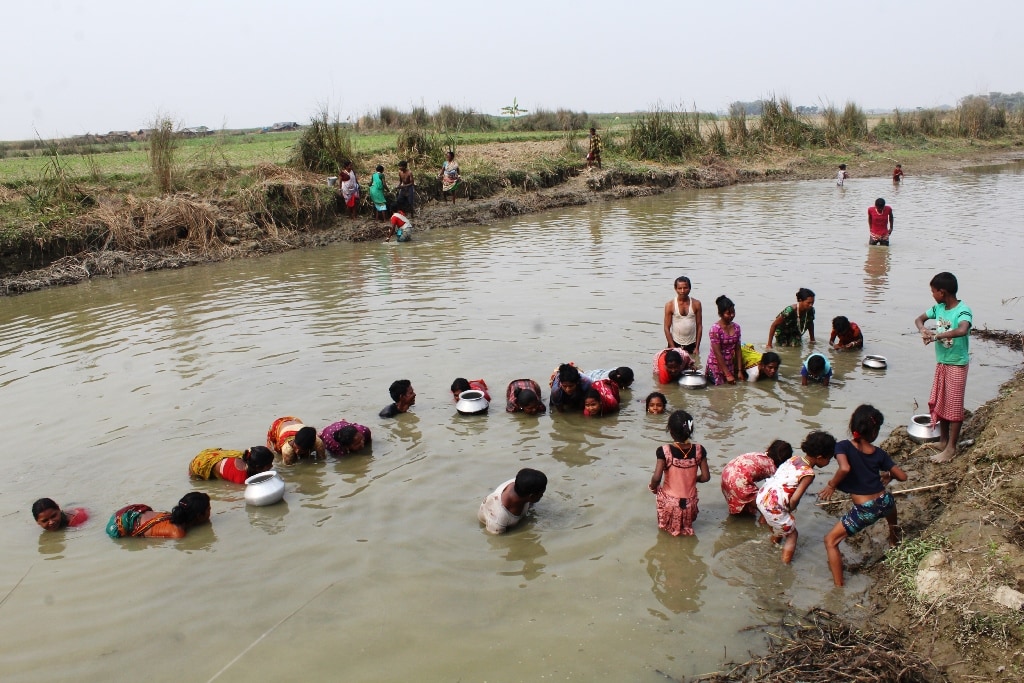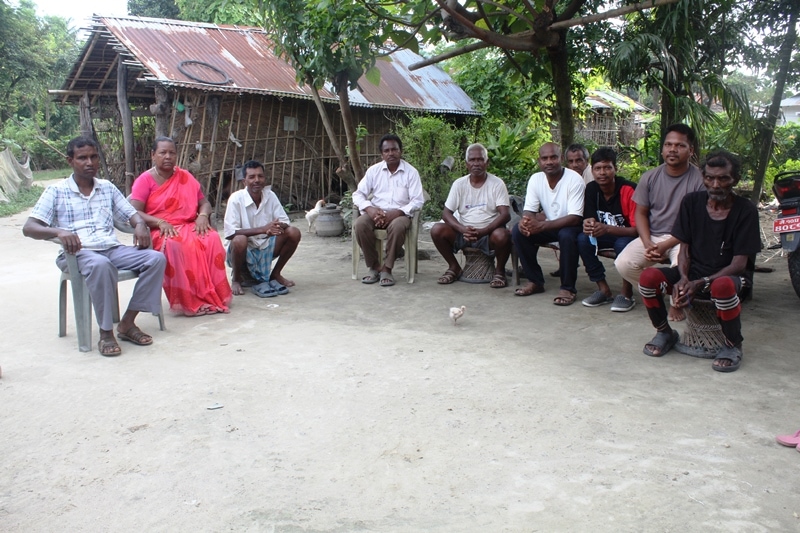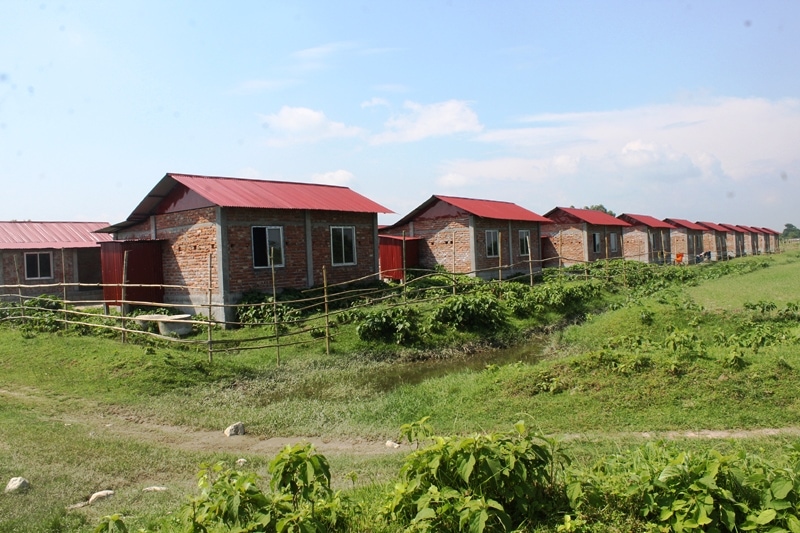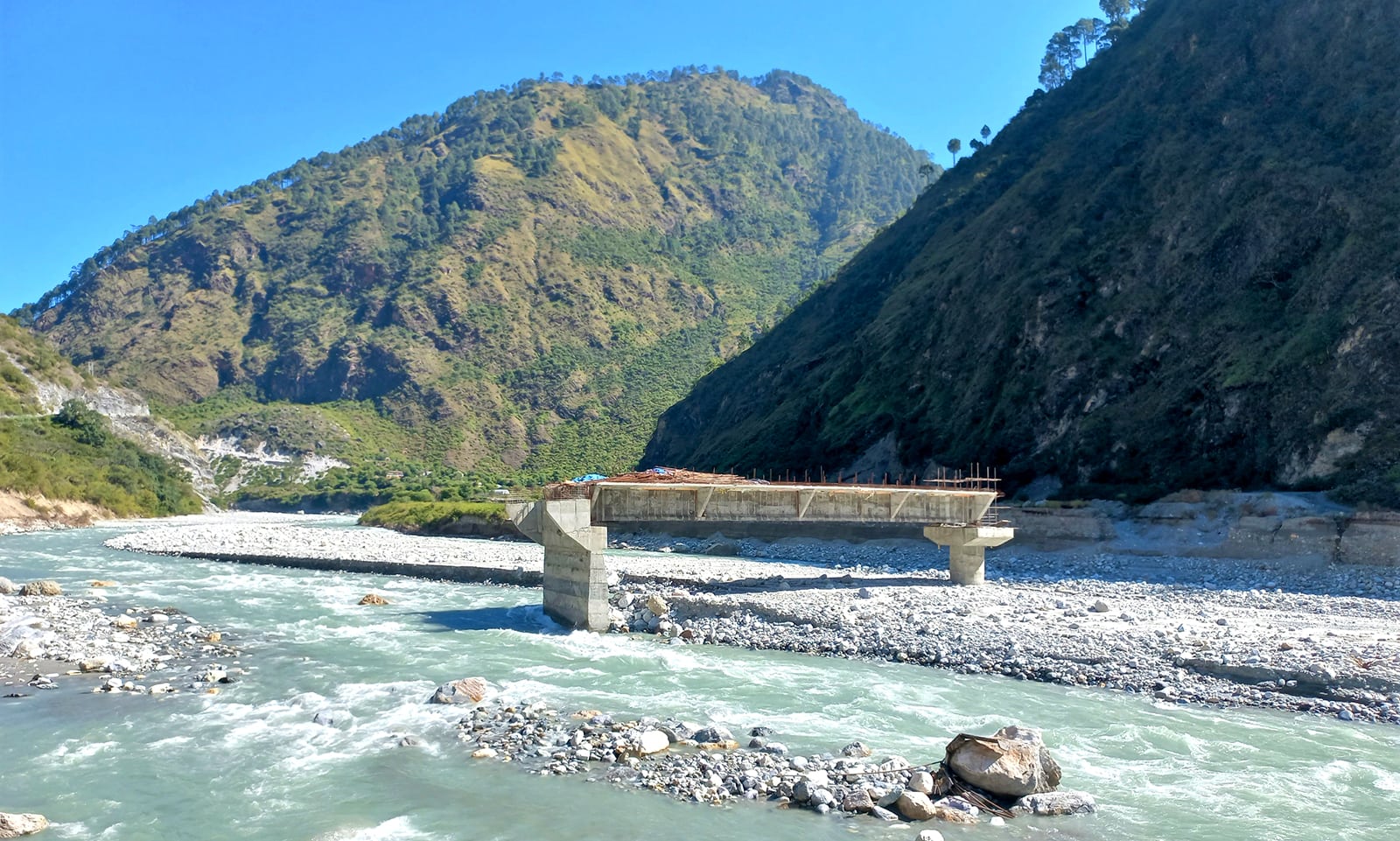Local governments, which are responsible for the upliftment and development of minorities, seem to be almost unaware of their responsibility. Local governments’ neglect towards the upliftment of the endangered Santhal community in Jhapa could be a case study.
Arjun Rajbanshi: Centre for Investigative Journalism

Santhals fishing at a local river in Bahradarshi Ruralmunicipality, Ward-1, Jhapa
Jeevan Kisku of Haldibari Rural Municipality-3, Jhapa, has been sustaining his family by working as a labourer. His father Shrilal is ill. His mother works as a labourer at a tea plantation in Phulomani.
His grandfather Kupit Narayan Kisku, however, was the first Pradhan Panch of the then Haldibari Village Panchayat. He was elected to the position thrice. The family owned around 4 acres of land. But now, Kupit Narayan’s grandson Jeevan has to survive on daily wages.
Jeevan is a representative character of the Santhal ethnic community. The situation Jeevan Kisku finds himself in reflects the overall condition of this endangered group living in Jhapa. Around 80 percent of Santhals depend on daily wages for a living. One or two generations ago, the Santhals owned large plots of land. Now they have become landless squatters.
The economically, socially and politically neglected and endangered Santhals expected special programmes for their upliftment after the local and federal elections three years ago. But in terms of programmes and budget, they have been neglected by both the local and state governments. Three years of suffering has left them frustrated.
For example, during the fiscal years 2017/18, 2018/19 and 2019/20, the people’s representatives of 15 municipalities of Jhapa spent Rs 30.62 billion budget. However, out of this, a total of Rs 16.7 million has been spent on the development and upliftment of the Santhals. Somnath Portel, head of District Coordination Committee, Jhapa, said, “Our people’s representatives believed merely building roads equated to development. They did not pay attention to the upliftment of the endangered Santhals.”
According to the Mechinagar Municipality, Santhals live in nine of the 15 wards of the city. The people’s representative prepared a budget of Rs 3.89 billion in the last three fiscal years. However, the budget was not used for the upliftment of the city’s Santhals. Hopes of 1,476 Santhals of the city from the people’s representatives were dashed. In the fiscal year 2019/20, Ward No. 15 allocated a sum of Rs 50,000 for the Santhals. But that amount was not spent.
Jetha Murmu of Gaurigunj Municipality, Jhapa, is an elected people’s representative from the Santhal community. However, his own local government has been unable to pay attention to the community’s needs. He said, “Our village is densely populated by Santhals. I am a people’s representative. So, many expected that budget would be allocated for the upliftment of Santhals. But it hasn’t happened in the past three years.”
In the fiscal year 2018/19, the rural municipality allocated Rs 200,000 for its ‘Santhal Social Upliftment Programme’. But even that amount could not be spent. Jetha Murmu said, “The amount was returned after the local officials didn’t show any interest towards implementation of the programme.”
On February 24, a programme titled ‘Santhal Cultural Interaction’ was organised in Baghachoudhari. Under Murmu’s leadership, there was a debate between leaders of Nepal and India on how to preserve Santhal culture. A total of Rs 70,000 was spent on that programme. But when it came to reimbursement, the rural municipality only provided Rs 50,000. He said, “Even after asking for it many times, I did not get it. I had to pay Rs 20,000 out of my own pocket.”

A gathering of Santhals at Kankai Municipality, Ward-7, Jhapa.
Sukol Murmu is a ward member of Bahardashi Gaonpalika-1. He had demanded that Rs 2 million be allocated for the upliftment of the Santhals for the fiscal year 2019/20. The plan was to provide Rs 500,000 each to help Santhal youth and women from Mandarbari Santhal Gaun, Sadhuparti Santhal Gaun, GN Marshall Santhal Club and Santhal Women’s Club take up commercial animal husbandry.
But the rural municipality only allocated Rs 700,000 for his proposal. Sukol said, “I talked to the village chairman, vice-chairman, chief administrative officer and others about the small budget. But they didn’t hear me out. ”
The people’s representatives of Bahardashi village municipality prepared a budget of Rs. 1.74 billion in the last three fiscal years. Information Officer Chetnath Neupane said that the budget set aside for Santhals was only Rs. 1.3 million.
The people’s representative of Shivasatakshi Municipality allocated Rs 300,000 for the Santhals in 2018/19 under ‘Upliftment of Santhal Culture’. The programme, unfortunately, was not implemented.
Babulal Mardi, a Santhal leader from Shivasatakshi-2, Dharampur, said that he has no information about the budget. “We don’t know if the municipality has allocated the budget,” said Mardi, who is also a member of the Federation of Indigenous Nationalities, Shivasatakshi town committee.
Few takers for new housing units
Just north of Kumarkhod, Jhapa, 20 houses of the same colour with red zinc sheets as roofs have been built. The three-room concrete house with a toilet was built by Jhapa Municipality for the extremely poor and endangered Santhal citizens of ward No. 2.

Houses constructed for Santhals in Jhapa rural municipality, Ward-2 in Jhapa. But owing to a lack of coordination with the rural municipal, Sathals haven’t been able to live there yet.
A year has passed since the house was built; the Santhal families have yet to move into the houses. Village chairman Jayanarayan Sah said the houses were built for Santhals at a cost of Rs 9.5 million under the Tarai-Madhesh Prosperity Programme.
As the Santhals are dissatisfied with the houses, only a few have applied for the housing units even after the rural municipality called for applications three times. Chandan Tudu, a member of the Nepal Santhal Development Association, Jhapa, said, “We should have been consulted at least once before building a house.” According to Chandan, they are not ready to take the house as the municipality built the house without any discussion with the Santhals.
Another leader, Mandal Mardi, accused the village municipality of not providing even basic assistance to the Santhals. He said, “Even when we applied for 15,000 rupees in writing, the village municipality did not pay attention to us.”
The Santhals of Jhapa Municipality had conducted an internal census last year to find out the population and educational status of their members. Mardi said he had sought the help of the village municipality to pay a week’s salary to 15 employees who collected data for the work. He said, “The census was completed by collecting Rs 100 from each Santhal family as we did not get even the small amount as assistance from the municipality.”
Jhapa municipality has the highest number of Santhals in the district. There are 4,644 Santhals living in the town.
Badaram Hemaram, district president of Nepal Santhal Development Association, submitted a written request to the Haldibari Rural Municipality to allocate some budget for an upliftment programme in the fiscal years 2018/19 and 2019/2020. After the request, he spoke with village chairman Rabindra Lingden and vice chairman Dambar Giri. However, Hemaram said that the rural municipality did not cooperate.
“There is an inclusion committee in the village municipality. The chairman and vice-chairman asked the committee to get the money from there, “said Hemaram.” It was not possible to arrange a separate budget from the committee as there are many groups represented in the committee.” A total of 2,097 Santhals live in Haldibari. The rural municipality has spent a total of Rs 195,000 for them in three years.
Powerless people’s representatives
Santhals live in all 15 municipalities of Jhapa district. According to the 2011 census, there are 30,773 Santhals living in Jhapa. Santhal is the fifth most spoken language in the district. In Jhapa, only four Santhal people have been elected to the local governments.

Bhaguduba Santhal colony in Bahradarshi Ruralmunicipality, Ward-1, Jhapa.
Jetha Murmu is a member of Gauriganj Municipality, Sukol Murmu is a ward member in Bahardashi Municipality-1 and Marangmai Hasda is a woman ward member of Jhapa Municipality-2. Similarly, Marang Hasda of Kankai Municipality-7 is a member of the District Coordination Committee.
The people’s representatives from the Santhal community say they feel neglected even while discharging their responsibilities. Hasda signed a document at the ward office on September 2, 2020 after ward Secretary Narayan Chamlagai called her to the ward office. Hasda, who went to the ward office after cycling for about three km, did not know what the document was about. Even three years after his election, the ward and rural municipality have not given her any responsibility. She said, “Secretary sir calls me when there is a meeting. They are the ones who speak in the meeting. I listen. When it’s over, I sign the minute and go home. ”
Ward member of Bahardashi-1 Sukol Murmu also complains that he has not been given enough responsibilities in the ward. He said that no one listens to him as he is the only Santhal in the rural municipality office. Murmu is a member of the good governance committee of the village municipality. However, he has no idea what has been done so far for good governance. He said, “I go to the ward office daily. If the ward chairman assigns some work, I do it. Otherwise, I stay around all day and return home. ”
Jetha Murmu is a nominated executive member of Gauriganj Rural Municipality. He is also a member of the monitoring committee headed by the vice-chairman and the budget distribution committee. Even though he is in the budget distribution committee, he can’t allocate enough funds for the Santhals. He said, “Even after sitting in this chair, I can’t do as much as I should for my people.”
According to Constituent Assembly member Mohan Tudu, the condition of the Santhals in Jhapa is deteriorating as the local people’s representatives have not paid attention to their problems. “The People’s representatives should have introduced at least one programme a year for Santhals,” he said. But, they are not paying attention to their cause,” said Tudu, “Without the support of the state and local governments, the language, culture and customs of the Santhals will not last long.”



